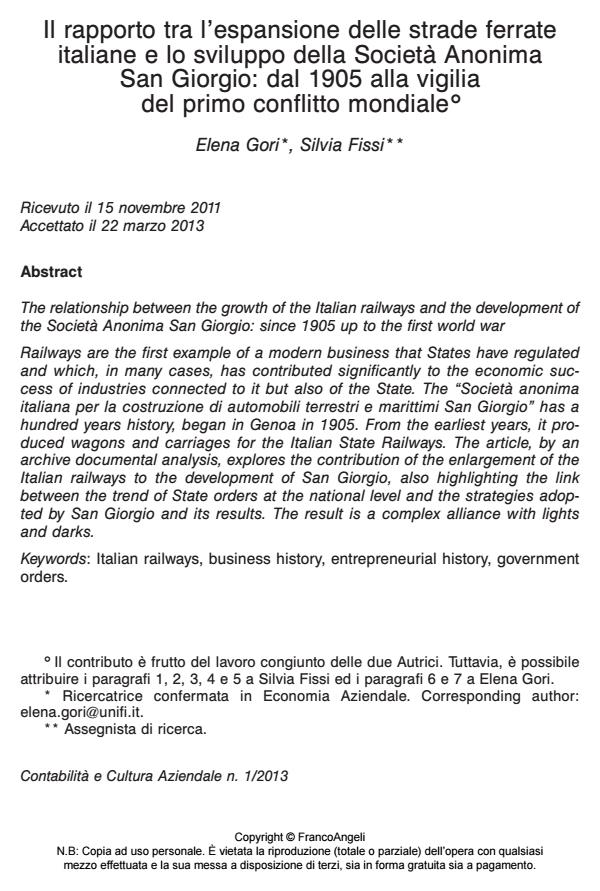Il rapporto tra l’espansione delle strade ferrate italiane e lo sviluppo della Società Anonima San Giorgio: dal 1905 alla vigilia del primo conflitto mondiale
Titolo Rivista CONTABILITÀ E CULTURA AZIENDALE
Autori/Curatori Elena Gori, Silvia Fissi
Anno di pubblicazione 2013 Fascicolo 2013/1
Lingua Italiano Numero pagine 28 P. 35-62 Dimensione file 534 KB
DOI 10.3280/CCA2013-001003
Il DOI è il codice a barre della proprietà intellettuale: per saperne di più
clicca qui
Qui sotto puoi vedere in anteprima la prima pagina di questo articolo.
Se questo articolo ti interessa, lo puoi acquistare (e scaricare in formato pdf) seguendo le facili indicazioni per acquistare il download credit. Acquista Download Credits per scaricare questo Articolo in formato PDF

FrancoAngeli è membro della Publishers International Linking Association, Inc (PILA)associazione indipendente e non profit per facilitare (attraverso i servizi tecnologici implementati da CrossRef.org) l’accesso degli studiosi ai contenuti digitali nelle pubblicazioni professionali e scientifiche
Railways are the first example of a modern business that States have regulated and which, in many cases, has contributed significantly to the economic success of industries connected to it but also of the State. The "Società anonima italiana per la costruzione di automobili terrestri e marittimi San Giorgio" has a hundred years history, began in Genoa in 1905. From the earliest years, it produced wagons and carriages for the Italian State Railways. The article, by an archive documental analysis, explores the contribution of the enlargement of the Italian railways to the development of San Giorgio, also highlighting the link between the trend of State orders at the national level and the strategies adopted by San Giorgio and its results. The result is a complex alliance with lights and darks.
Parole chiave:Italian railways, business history, entrepreneurial history, government orders.
Elena Gori, Silvia Fissi, Il rapporto tra l’espansione delle strade ferrate italiane e lo sviluppo della Società Anonima San Giorgio: dal 1905 alla vigilia del primo conflitto mondiale in "CONTABILITÀ E CULTURA AZIENDALE" 1/2013, pp 35-62, DOI: 10.3280/CCA2013-001003